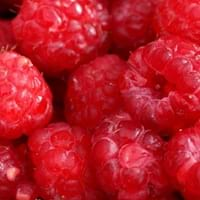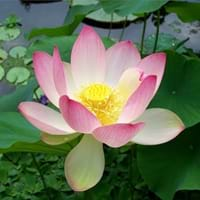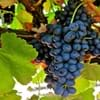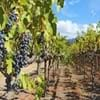Life Span
Perennial
Perennial
Origin
Not Available
Southern Asia
Types
PRIMOCANE RED RASPBERRIES ,FLORICANE RED RASPBERRIES
Not Available
Number of Varieties
Not Available
Habitat
Forests, Mountains, Tree canopies
Ponds
USDA Hardiness Zone
4-8
9-12
Sunset Zone
A1, A2, A3, 1a, 1b, 2a, 2b, 3a, 3b, 4, 5, 6, 7, 8, 9, 10, 11, 12, 13, 14, 15, 16, 17, 18, 19, 20, 21, 22, 23, 24
21,22
Habit
Upright/Erect
Clump-Forming
Flower Color
White
White, Red, Pink, Light Pink, Hot Pink, Rose, Coral
Flower Color Modifier
Bicolor
Bicolor
Fruit Color
Red
Not Available
Leaf Color in Spring
Green
Lime Green, Sea Green
Leaf Color in Summer
Green
Lime Green, Sea Green
Leaf Color in Fall
Green
Lime Green, Sea Green
Leaf Color in Winter
Light Green
Not Available
Leaf Shape
Toothed
Orbicular
Plant Season
Spring, Summer, Fall
Summer, Fall
Sunlight
Full Sun, Partial Sun
Full Sun, Partial Sun
Type of Soil
Loam, Sand
Clay, Loam
The pH of Soil
Acidic, Neutral
Neutral
Soil Drainage
Well drained
Poorly Drained
Bloom Time
Spring, Summer
Late Spring, Early Summer, Summer, Late Summer
Tolerances
Drought
Wet Site
Where to Plant?
Container, Ground, Pot
Container, In Water, Pot
How to Plant?
Suckers
From Rhizomes, Seedlings
Plant Maintenance
Medium
Medium
Watering Requirements
Average Water Needs
Requires 4 to 8 inches of water above the soil line
In Summer
Lots of watering
Lots of watering
In Spring
Moderate
Moderate
In Winter
Average Water
Average Water
Soil pH
Acidic, Neutral
Neutral
Soil Type
Loam, Sand
Clay, Loam
Soil Drainage Capacity
Well drained
Poorly Drained
Sun Exposure
Full Sun, Partial Sun
Full Sun, Partial Sun
Pruning
Remove damaged leaves, Remove dead branches, Remove dead leaves
Cut away fading foliage
Fertilizers
All-Purpose Liquid Fertilizer
20N–4.4P–16.6K at 20-d intervals
Pests and Diseases
Red blotch
Aphids, Caterpillars
Plant Tolerance
Drought
Drought
Flowers
Insignificant
Showy
Flower Petal Number
Single
Single, Double, Semi-Double
Foliage Texture
Medium
Bold
Foliage Sheen
Matte
Matte
Attracts
Birds, Butterflies
Beetles, Insects
Allergy
Abdominal pain, breathing problems, Diarrhea, Eczema, Fainting, Itchiness, Nausea, Vomiting, wheezing
Constipation
Aesthetic Uses
bank hedging, Cottage Garden, Slopes hedging
Beautification
Beauty Benefits
Not Available
Promotes healthy skin, Provides herbal hair care
Environmental Uses
Air purification
Air purification
Medicinal Uses
anti-inflammatory, Anti-oxidant, Cancer, Improve heart health, Liver Protection, Skin Whitening and Pigmentation Medicine, Weight loss
Antidiarrhoeal, Astringent, Cancer, Cardiotonic, Febrifuge, Hypotensive, Resolvent, Stomachic, Tonic
Part of Plant Used
Fruits, Leaves, Root
Flowers, Leaves, Root, Seeds, Stem
Other Uses
Jam, Jelly, Used As Food, Used for its medicinal properties
Leaves are used to wrap small parcels, Roasted seed is used as a coffee substitute, Root is used as a vegetable
Used As Indoor Plant
No
Yes
Used As Outdoor Plant
Yes
Yes
Garden Design
Edible, Fruit / Fruit Tree, Hedges
Feature Plant, Tropical, Water Gardens
Botanical Name
RUBUS 'Autumn Bliss'
NELUMBO nucifera
Common Name
Red Raspberry
East Indian Lotus, Sacred Lotus
In Hindi
रूबस idaeus
पवित्र कमल
In German
Himbeere
Heiliges Lotus
In French
Rubus idaeus
Lotus Sacré
In Spanish
Rubus idaeus
loto sagrado
In Greek
σμέουρο
ιερή Lotus
In Portuguese
Rubus idaeus
Lotus sagrado
In Polish
Rubusidaeus
Sacred Lotus
In Latin
Rubus idaeus
sacra Lotus
Phylum
Magnoliophyta
Magnoliophyta
Class
Magnoliopsida
Magnoliopsida
Family
Rosaceae
Nymphaeaceae
Clade
Angiosperms, Eudicots, Rosids
Angiosperms, Eudicots
Tribe
Rubeae
Not Available
Subfamily
Rosoideae
Nelumbonaceae
Number of Species
Not Available
Not Available
Importance of Red Raspberry and Sacred Lotus
Want to have the most appropriate plant for your garden? You might want to know the importance of Red Raspberry and Sacred Lotus. Basically, these two plants vary in many aspects. Compare Red Raspberry and Sacred Lotus as they differ in many characteristics such as their life, care, benefits, facts, etc. Every gardener must at least have the slightest clue about the plants he wants to plant in his garden. Compare their benefits, which differ in many ways like facts and uses. The medicinal use of Red Raspberry is anti-inflammatory, Anti-oxidant, Cancer, Improve heart health, Liver Protection, Skin Whitening and Pigmentation Medicine and Weight loss whereas of Sacred Lotus is Antidiarrhoeal, Astringent, Cancer, Cardiotonic, Febrifuge, Hypotensive, Resolvent, Stomachic and Tonic. Red Raspberry has beauty benefits as follows: Not Available while Sacred Lotus has beauty benefits as follows: Not Available.
Compare Facts of Red Raspberry vs Sacred Lotus
How to choose the best garden plant for your garden depending upon its facts? Here garden plant comparison will help you to solve this query. Compare the facts of Red Raspberry vs Sacred Lotus and know which one to choose. As garden plants have benefits and other uses, allergy is also a major drawback of plants for some people. Allergic reactions of Red Raspberry are Abdominal pain, breathing problems, Diarrhea, Eczema, Fainting, Itchiness, Nausea, Vomiting and wheezing whereas of Sacred Lotus have Constipation respectively. Having a fruit bearing plant in your garden can be a plus point of your garden. Red Raspberry has showy fruits and Sacred Lotus has no showy fruits. Also Red Raspberry is not flowering and Sacred Lotus is not flowering . You can compare Red Raspberry and Sacred Lotus facts and facts of other plants too.





